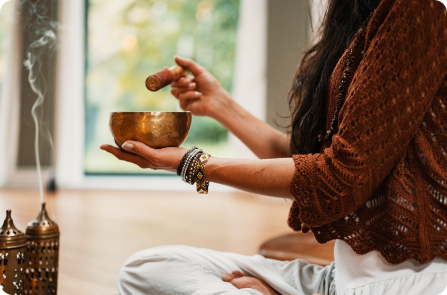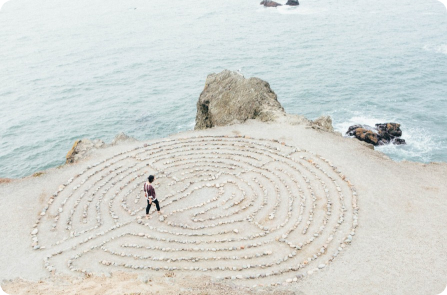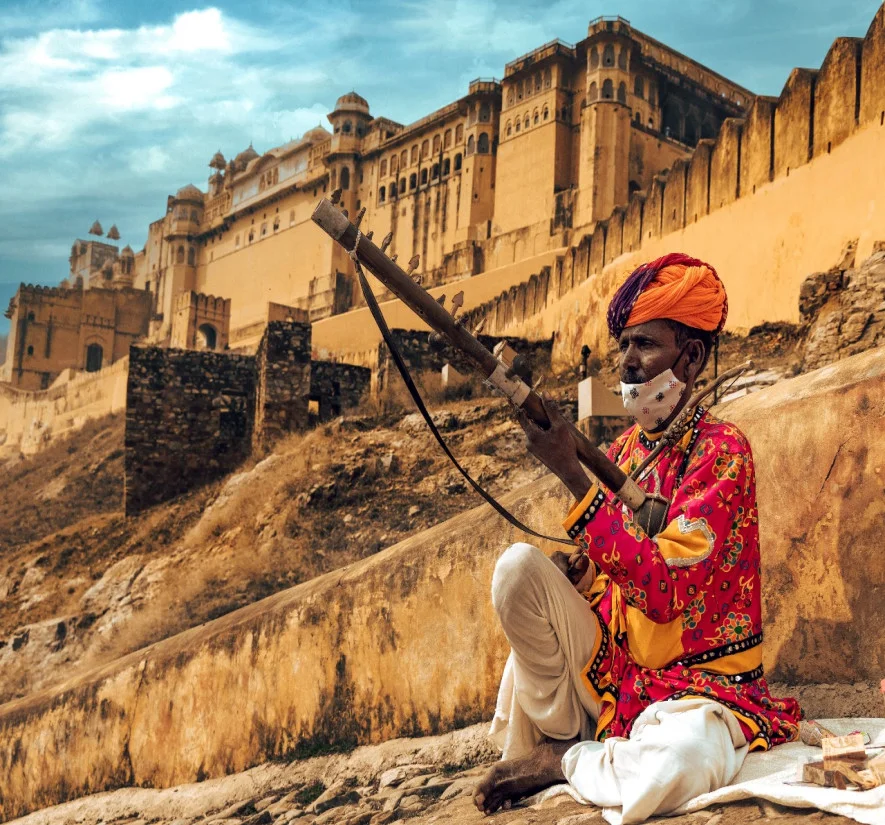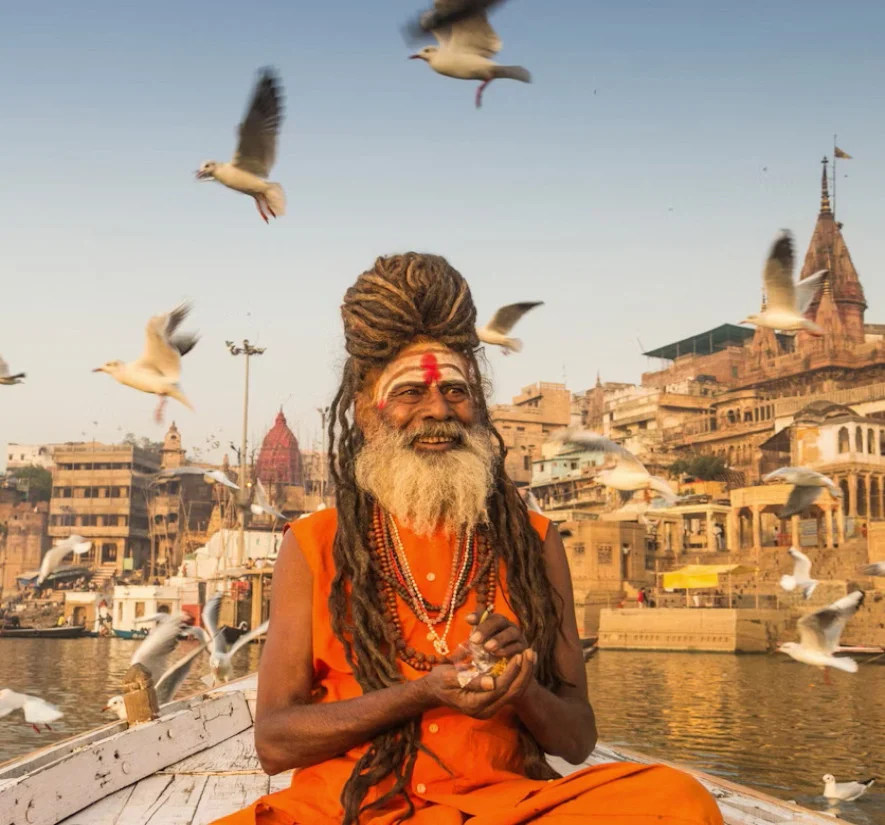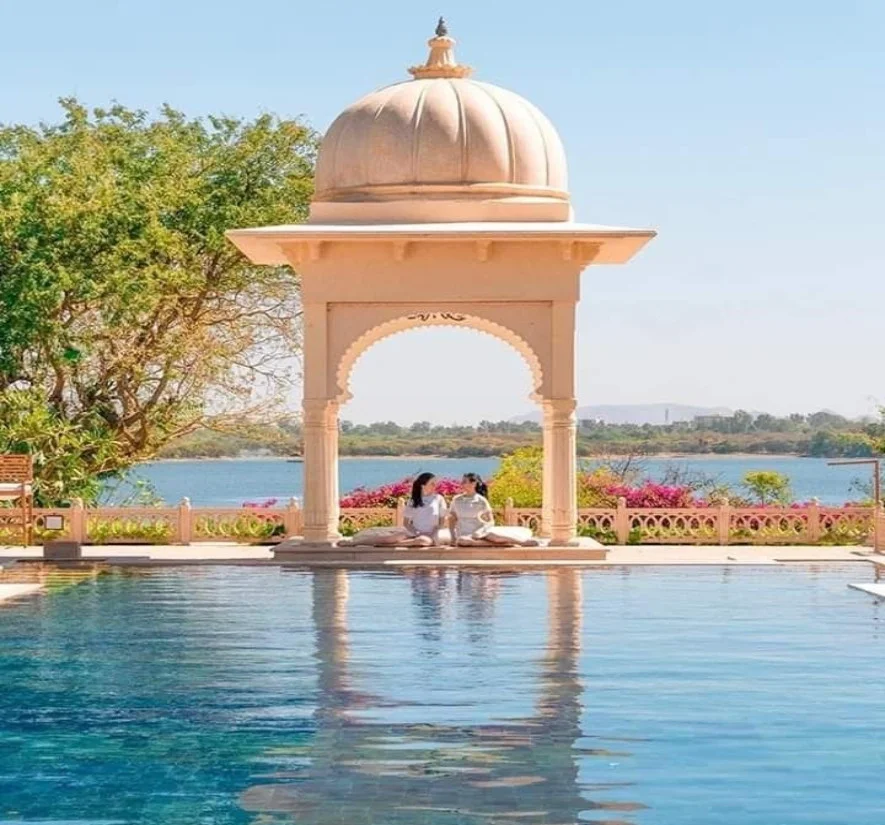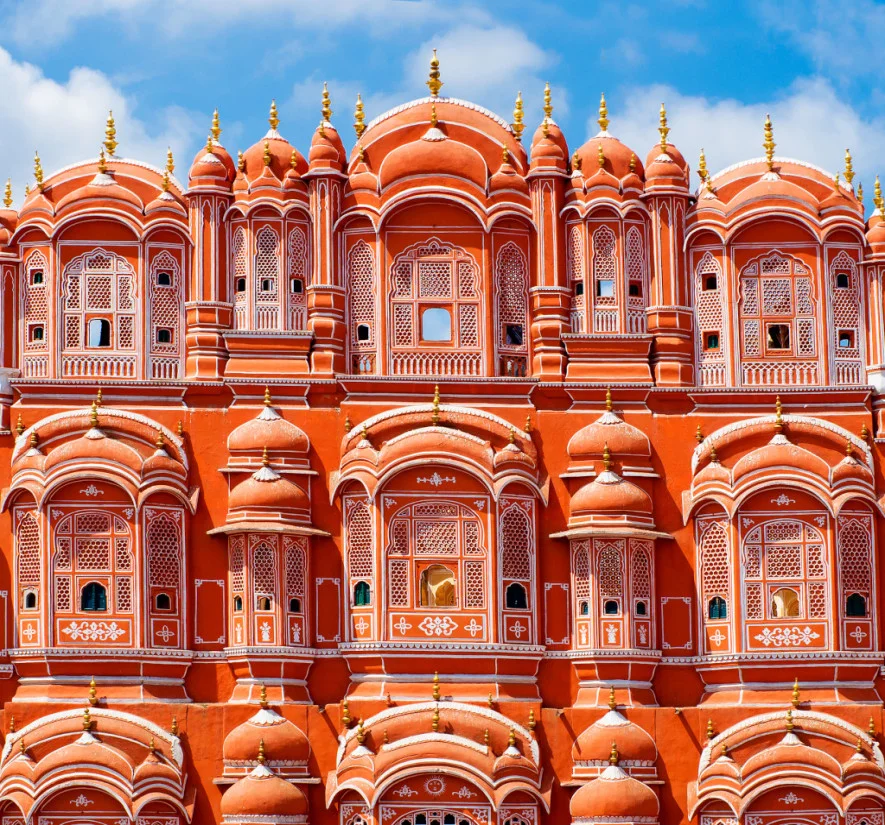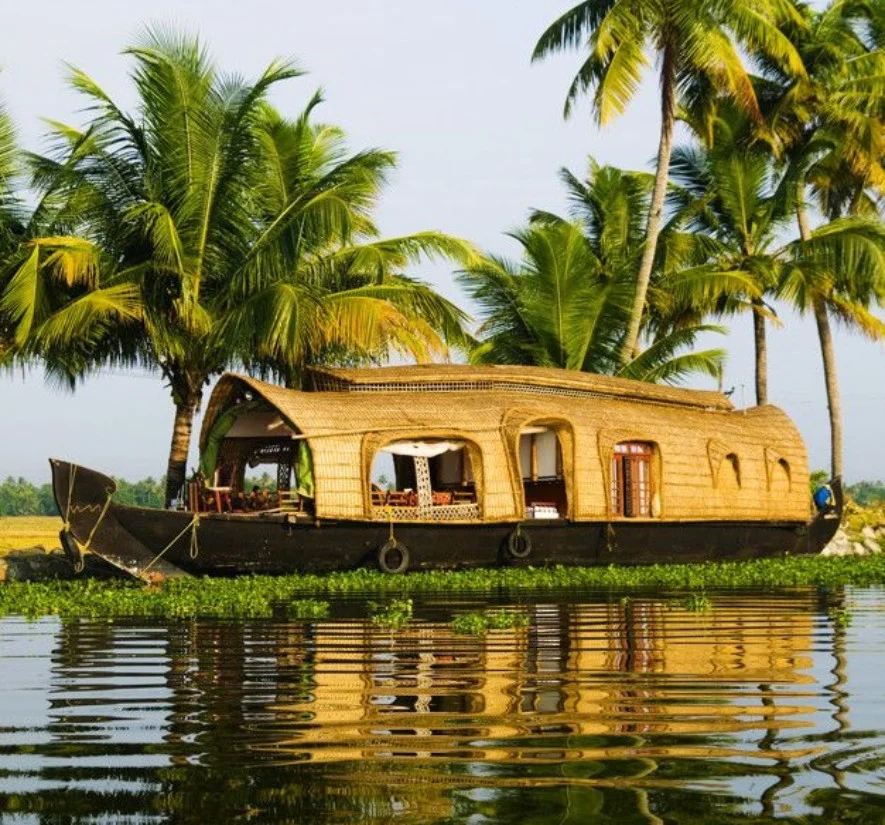DELHI DAY TOUR
The City of Agra needs no introduction; it is home to one of the most recognized addresses in the world – The Taj Mahal!
The first capital of the mighty Mughal empire, the ancient town saw several generations of the Mughals rule the mammoth kingdom of Hindustan and is proud heir of the Mughal architectural legacy; three UNESCO Sites – The Exquisite Taj Mahal, The Majestic Agra Fort and The Abandoned city of Fatehpur Sikri, Agra are wonderful examples of the confluence of the Islamic & Indian architecture.
Not just the monuments but a centuries-old centre for art, crafts, culture, cuisine, festivals & Fairs and some amazing markets the city of has beholds some amazing tales from the Mughal times.
Let our expert travel planners and passionate local guides take you on some of the most memorable outings in the city.
Sunil Gupta

Popular Day Trips
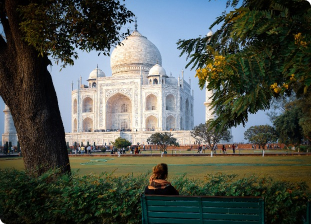
30% off
Best Seller
Day Trip to Taj Mahal by Superfast train
 100 Reviews
100 Reviews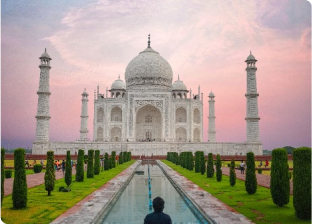
30% off
Best Seller
Day Trip to Taj Mahal by Superfast train
 100 Reviews
100 Reviews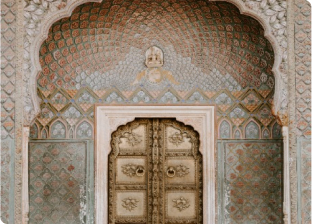
30% off
Best Seller
Day Trip to Taj Mahal by Superfast train
 100 Reviews
100 Reviews
30% off
Best Seller
Day Trip to Taj Mahal by Superfast train
 100 Reviews
100 ReviewsWhat you'll receive
Personalized Tours
Every tour we offer can be personalized based on your preferred pace, start & finishing times, mode of transport, dietary requirements and preferred language.
Local guides
Our team of passionate local guides born and raised in the backyard of the Taj Mahal are familiar with every nook and corner of the city are the key to the most memorable touring experiences.
Unbeatable Support
We’ve got your back! Our dedicated support team is available throughout the tour for any support guidance and to answer any queries you may have.
Expert Planning
All the tours are curated by locals who have been in the touring industry for several years and have first-hand experience leading tours and in-depth knowledge of all aspects of the city.

Humayun’s Tomb: Mughal Splendor
One of the most lasting legacies of the Mughal empire is the grand mausoleums it built to honor its emperors, queens, and notables. These grand exhibits of architecture are typically snuggled in sprawling geometric lawns and green landscapes adorned with fountains and reflecting pools.
Delhi’s Humayun’s Tomb (UNESCO World Heritage Site) is the grand mausoleum of the Great Emperor Humayun. It was commissioned by his wife Bega Begum. Constructed in 1575 AD, the tomb is located in the middle of a vast garden.
Visiting this iconic site—which is believed to have paved the path for the construction of the Taj Mahal—is an absolute must.
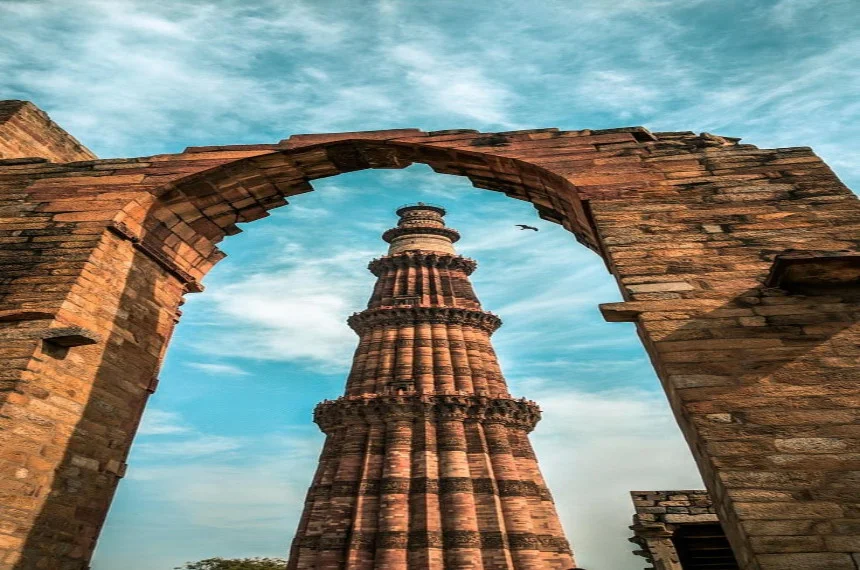
Qutb Minar: Architectural Masterpiece
The Qutb Minar was built under the reign of Qutbuddin Aibak in the 13th century in what is known as the Delhi Sultanate era. Standing tall at a staggering 72.5 meters, it has remained for almost 800 years, the world’s tallest brick tower.
The Ghurid Dynasty constructed many such landmarks during its reign. Along with the Minaret of Jam in current-day Afghanistan, the Qutb Minar is one of the greatest surviving legacies of the empire.
This important Delhi landmark also gives you sprawling views of the city’s landscape.

India Gate & Rajpath: Imperial Legacy
It is believed that over 84,000 Indian soldiers lost their lives in the bloody First World War. The India Gate is a memorial erected in memory of those slain soldiers.
The design of the building was finalized by the chief architect of the new colonial capital (New Delhi), Sir Edwin Lutyens. It is modeled after the Gateway of India and the Arc De Triomphe in Paris.
Today, it stands as one of the city’s most recognizable symbols and a must-visit tourist site.
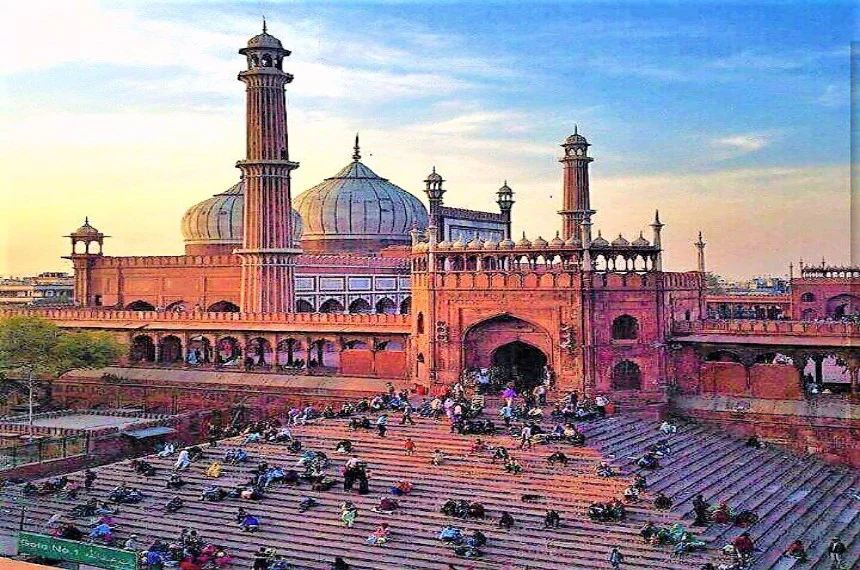
Jama Masjid & Chandni Chowk: Back in the Mughal Era
Built during the reign of Shahjahan—who also built the Taj Mahal—the Jama Masjid is one of the largest and most significant mosques in the world (1650-56 AD).
Over the last four centuries or so, this mosque has been the grand gathering place of the Muslim faith—the chief mosque of the Mughal Empire and the site of Eid and Friday prayers.
It is considered one of the finest exhibits of the Indo-Saracen architectural tradition perfected by the Mughals.
Located right across from the Jama Masjid is Delhi’s most beloved bazaar—Chandni Chowk. With streets and alleys hiding centuries-old legends, stories, and secrets, the famous Chandni Chowk is a great place to get lost in.
You cannot miss it.

Lotus Temple: Home to the Bahai Faith
The Bahai faith originated in Persia. How it got to India and found a refuge here is a story in and of itself. A story of resilience, struggle, persecution, and the power of faith in the face of adversity.
The Lotus Temple is one of the only seven Baha’i Houses of Worship located on the planet. It is open to people of all faiths, persuasions, colors, races and creeds.
Designed by the legendary Iranian architect Fariborz Sahba, its post-modern building comprises 27 free-standing marble structures that look like petals of a rose. Hence the name Lotus Temple.
A visit to the temple is quite an educational and spiritual experience. Put it on your bucket list.

Akshardham Temple: Spiritual Marvel
Another important religious and spiritual landmark of Delhi is the “Divine Abode of God” Akshardham Temple.
Built as a homage to the legacy of Bhagwan Swaminarayan (1731-1830 AD) in 2005, it is a grand complex that houses a spectacular temple, and a small man-made lake and offers cultural boat rides.
The main temple is adorned with sculptures and depictions of deities, dancers, flora, fauna and other creatures and symbols mentioned in the ancient Hindu scriptures.
A boat ride around the main temple complex is a trip down centuries of the evolution of the Hindu faith, with myths and legends vividly portrayed on its walls— a pure visual delight.

National Museum & Craft Museum: Cultural Gems
The National Museum of India is a treasure trove for lovers of history and arts. It houses more than 300,000 pieces of arts, crafts, artifacts, and antiques spanning some five millennia of Indian history.
Inaugurated in 1949, a couple of years after the Indian independence, the National Museum was meant to showcase the proud civilization heritage of the nation.
If history and heritage are your jams, do take time out for a visit to this important Indian institution.

Lodhi Gardens: Green Oasis
Sprawling over 90 acres, the Lodhi Gardens are snuggled in the middle of the city. Dating back to the Delhi Sultanate era, the Lodhi Gardens house the tombs of the great scion of the Lodhi Dynasty (1451-1526 AD)—Sikander Lodi.
Perfect for a leisurely stroll, the Lodhi Gardens have served Delhiites for centuries and provide a green escape from a dense and populated city.

Street Food Adventure: Private Food Tour
Delhi is a food lover’s dream destination. Its culinary heritage has absorbed influences and traditions from as far as Persia, Central Asia, Europe, and mainland India. The Mughals transformed the food scene of the capital with their culinary experience.
Our bespoke street food tour in old Delhi takes you to be best traditional eateries. Feast on the city’s iconic Chole Bhature (spiced-up chickpeas curry), Parantha (flatbread), Chaat, Samosas, Gol Gappas, and kebabs.
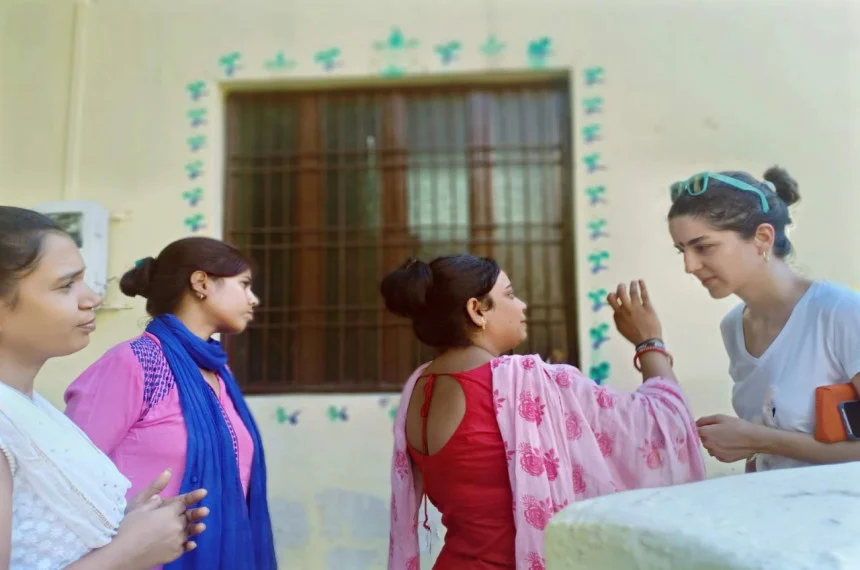
Dilli haat INA: Craft Galore
The village of Kachpura is a working-class settlement located right across the Yamuna River near the Taj Mahal. It is where the 22,000 or so workers, laborers and artisans who built this magnificent monument were housed.
Now a village that brims with history and lore, the Kachpura is a tremendous place for heritage walks and trails. Join us for our special trails to understand this very unique and special place.

Lutyens’ Legacy: Connaught Place & Janpath Market
When the British Empire decided to move its capital further up north from Calcutta, the obvious choice was the seat of the Mughal Empire, Delhi.
However, the modern empire needed a new modern metropolitan city to meet its needs. So a new city was commissioned. Sir Edwin Lutyens, then the greatest British architect of the time was commissioned to conceptualize many of the important buildings and avenues of New Delhi.
Such is his influence that much of the new Capital is known as Lutyens Delhi. The Connaught Place and Janpath Markets are two important landmarks of this project.
Named after the First Duke of Connaught and Statearn, Connaught Place is the city’s main financial and business district and major shopping destination. It houses many of Delhi’s finest restaurants and hip nightlife stopovers.

Pedaling Adventure: Cycle Through Old Delhi
Old Delhi has the old-world Hindustan charm.
Narrow alleys, winding streets, dazzling bazaars swarmed by people, noisy bustle of carts, rickshaws, and other modes of transportation—and cultural allure.
Cycling through the old city in our exclusive “Pedaling Adventure” Tour is one of the best ways to explore Delhi. Stopovers will include Jama Masjid, Chandni Chowk, Spice Market, Sis Ganj Gurudwara, old Havelis, and other important landmarks.
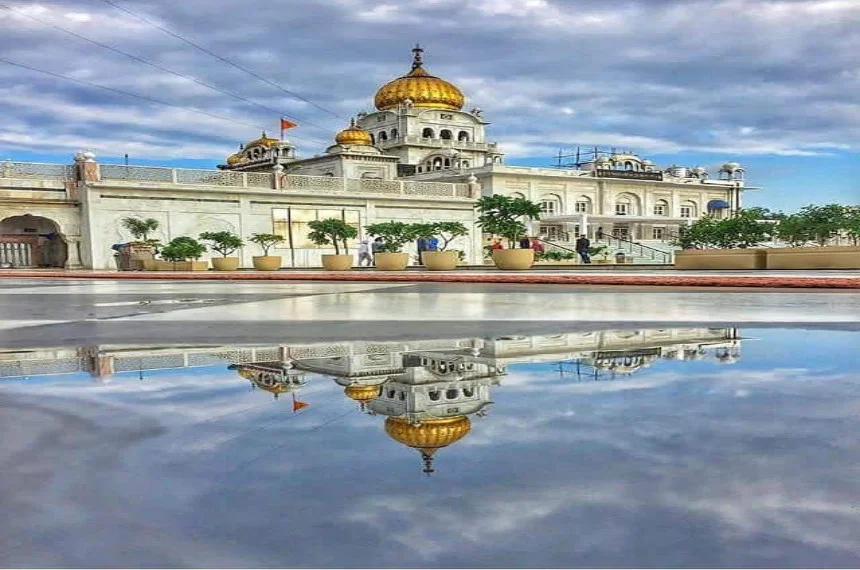
Temple Divinity: Gurudwara Bangla sahib Visit
One of the fundamental pills of the Sikh faith is its hospitality. And the Sikhs express their warmth and hospitality to guests and visitors with food—lots of it, free and served with love and care.
Every Sikh Gurudwara (place of worship) has some kind of a “Langar” arrangement. Langar is free food prepared at the establishment to serve visitors.
The Gurudwara Bangla Sahib—an important Sikh landmark and place of worship—offers free food (langar) to all devotees and visitors.
In our private behind-the-scene tour, you will witness how Langar is prepared for thousands of visitors every day at the Gurudwara Bangla Sahib.

Discovering Delhi’s Heritage: Walking Tour Through Old Delhi
If cycling is not your thing, a walking tour of old Delhi is a great way to immerse yourself in the allure and charm of Delhi. Nothing is up close and personal and gives you a fundamental taste of Delhi as a good old-fashioned up-and-about walking tour.
You’ll get to interact with and observe Delhiites go about their daily life. You will witness the workers, craftsmen, cooks, waiters, and laborers go about their routines.
Leading Bespoke Taj Mahal Tour Advisor
Book Your Taj Mahal Tour Today!
Free the wanderlust within and embark on a remarkable journey to the Taj Mahal from Delhi. Let the beauty, history, and romance of this architectural marvel captivate your heart and soul. Book your Taj Mahal tour with us today and let us curate an experience that will leave you with memories to cherish forever. Unlock the gates to a world of timeless love and architectural splendor. Join Pioneer Holidays on Taj Mahal tours from Delhi and let the magic unfold.
Frequently Asked Questions

Why is Delhi famous for Tourism?
Delhi is one of India’s most visited tourist destinations. Not only is it the proud capital of modern India, but it is also an ancient city steeped in history, culture, and civilizational legacy.
It is home to some of India’s top historical attractions like the Red Fort (Lal Qila), Humayun Tomb, India Gate, Lodhi Gardens, and Jama Masjid.
Spiritual sites like the Akshardham and Lotus temples, Gurudwara Bangla Sahib, and the Jama Masjid attract millions of visitors worldwide every year.
In addition to the above, Delhi is also an integral part of the most popular tourist circuit in north India, known as the Golden Triangle, which comprises Delhi, Jaipur, and Agra.
How many days are enough for a Delhi tour?
There are two Delhis. One is in the north of the city: Purani Delhi or Old Delhi, characterized by its old-world charm and intrigue, and home to historical sites.
The other Delhi is the modern colonial part of the city in the south, built in the early part of the 20th century when the capital of the British Indian Empire was moved from Calcutta to Delhi in the north. This part (New Delhi) is the seat of power and prestige of the Indian Federation with landmarks like the Parliament and the President’s House.
We reckon that you need at least 2 days to visit all the top attractions of both Delhis.
What food is Delhi famous for?
Delhi is famous for its delicious cuisine. We recommend that you try out
– Parantha: flatbread stuffed with pickles, potatoes, butter etc.
– Chaat: a savory snack prepared from an assortment of spiced chickpeas, tomatoes, onions, and often topped with yogurt.
– Chole Bhature: spicy chickpeas (chole) served with deep-fried bread called Bhatura.
– Butter Chicken: tender chicken pieces prepared in a spicy tomato gravy.
Can I visit Delhi in one Day?
Yes. It is possible. But for that, you’ll have to limit your bucket list to a smaller number of landmarks. We recommend that you do not miss out on Red Fort, Jama Masjid, Qutb Minar, Humayun’s Tomb, and Chandni Chowk.
Is it Safe to travel to Delhi as a Solo Female?
Yes. Delhi is quite safe for female travelers. Tens of thousands of tourists from all over the world visit the top attractions of the city on any given day.
But it is important to observe precautions and stay safe. Dress appropriately, avoid staying out late in an unfamiliar place, beware of strangers offering you things that sound too good to be true, prefer booking travel through your hotel or tour operators etc.

